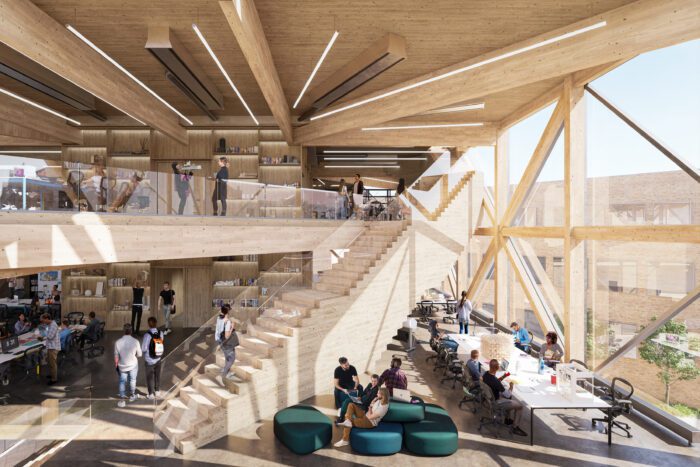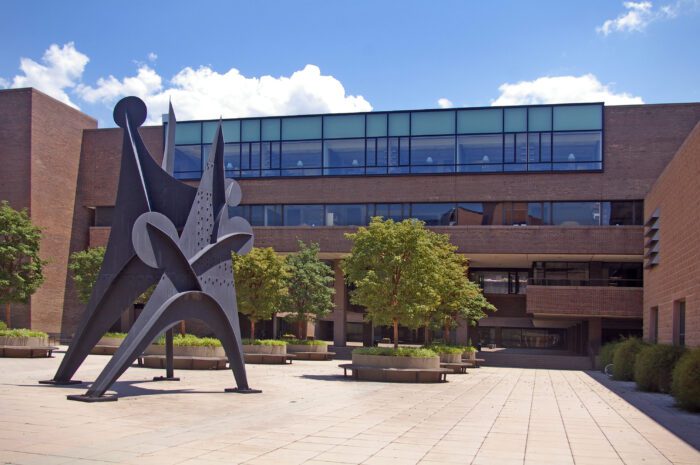The Ultimate Guide to Top Architecture Schools in the US: 2025 Rankings and What They Look For

Architecture education has changed dramatically over the past few years. Top architecture schools now teach students to think like researchers, not just designers. They want you to understand complex computer programs, environmental systems, and how buildings actually perform after construction. As someone who’s reviewed hundreds of student portfolios and watched these programs evolve, I can tell you that best architecture schools demand much more than they used to. You need technical skills, analytical thinking, and the ability to work across different fields. Getting into these programs means understanding what they actually want from students, not just what their websites say.
What is the #1 Architecture School in the US?
MIT’s School of Architecture and Planning consistently ranks at the top, but not for the reasons you might think. Their students spend as much time coding as they do sketching. The program focuses heavily on computational design and digital fabrication. Walk into their labs and you’ll see students operating CNC machines, large-format 3D printers, and robotic assembly systems that most architecture firms don’t even have.
1- MIT’s Technical Approach
MIT treats architecture like an engineering problem. Students learn to use software like EnergyPlus and Radiance to simulate building performance before anything gets built. They don’t just design spaces—they prove their designs work through data and testing. This approach produces graduates who can speak the language of both architects and engineers, which makes them valuable in today’s collaborative design environment.
2- Harvard’s Alternative Philosophy
Harvard’s Graduate School of Design takes a different approach. They emphasize urban thinking and landscape integration. Their students work with VR/AR labs and partner with environmental scientists to study how buildings interact with their surroundings. The program produces graduates who think about architecture as part of larger systems, not isolated objects.
3- Princeton’s Theoretical Foundation
Princeton combines philosophy with technology in ways that other schools don’t. Students engage with complex theoretical frameworks while learning structural analysis software like SAP2000. Their fabrication lab includes robotic systems and advanced material testing equipment, but students also spend time thinking about what architecture means in society.
Architecture School Rankings and Methodological Evaluation Criteria
Understanding how architecture schools ranking actually work helps you choose the right program. Rankings consider research output, faculty credentials, industry partnerships, and job placement rates. But they also look at less obvious factors like technological infrastructure and interdisciplinary collaboration.
Research Infrastructure Quality
The best programs invest heavily in research facilities. MIT recently acquired a large-format selective laser sintering system that lets students create complex geometries impossible to build with traditional methods. Yale has climate simulation chambers where students can test building envelope performance under controlled conditions. These aren’t just fancy toys—they’re tools that prepare students for the future of architectural practice.
Faculty Expertise and Industry Connections
Top programs hire faculty who are actively practicing or conducting research. They maintain strong connections with major firms and technology companies. This matters because it means students get access to real projects, internships, and job opportunities. The best programs feel more like professional training grounds than traditional academic departments.
Integration of Analysis and Design
Modern architecture programs teach students to move seamlessly between design tools and analysis software. You might start a project in Rhino/Grasshopper, test it in DIVA-for-Rhino, and then refine it in Revit. This workflow mirrors what actually happens in progressive design firms, where performance analysis drives design decisions.
Which Ivy League School Has the Best Architecture Program?
Each Ivy League program has developed its own specialty. Harvard focuses on urban-scale projects and landscape integration. Students work with GIS mapping technologies and environmental monitoring systems. They learn to gather real-time data from IoT sensor networks, which helps them understand how buildings actually perform after occupancy.
1- Yale’s Material Focus
Yale’s program stands out for its emphasis on materials and construction. Their fabrication facilities include concrete and steel workshops where students can experiment with structural systems. This hands-on approach produces graduates who understand how buildings actually get built, not just how they look in renderings.
2- Princeton’s Research Methodology
Princeton teaches students to conduct rigorous architectural research. They learn both qualitative and quantitative analysis techniques. This methodological training prepares graduates for academic careers or research positions in large firms. The program produces thoughtful practitioners who can articulate why their design decisions matter.
3- Columbia’s Urban Laboratory
Columbia treats New York City as a testing ground for architectural ideas. Students work with complex urban datasets and demographic analysis tools. They learn to use machine learning algorithms to identify patterns in urban development. This computational approach to urbanism prepares students for careers in planning and large-scale development.
Understanding Admission Requirements and Portfolio Evaluation Criteria
Getting into top architecture programs requires more than good grades and a pretty portfolio. Admissions committees look for evidence of computational thinking, process documentation, and technical skill development. They want to see how you solve problems, not just what your final projects look like.
Portfolio Process Documentation
Modern portfolio requirements emphasize process over presentation. Admissions reviewers want to see your design development methodology, including sketching processes, digital modeling workflows, and analysis integration. Show them how you think through problems, not just polished final images.
Technical Competency Requirements
Most programs expect entering students to have basic digital design skills. This means CAD proficiency and familiarity with 3D modeling software. Advanced programs may expect you to demonstrate understanding of parametric design principles or basic programming capabilities in languages like Python or C#.
Evidence of Interdisciplinary Thinking
The best candidates show evidence of collaboration across disciplines. Maybe you’ve worked with engineers on structural problems, or with environmental scientists on sustainability issues. Schools want students who can work in teams and communicate across professional boundaries.
How Much Does Architecture School Cost?
Architecture school is expensive. Private universities typically cost $200,000 to $300,000 for graduate programs when you include tuition, materials, fabrication costs, and living expenses. State universities offer more affordable options, usually ranging from $80,000 to $150,000 for graduate programs.
Hidden Costs and Material Expenses
Beyond tuition, architecture school involves significant material and fabrication costs. You’ll spend money on model-making supplies, printing, and access to specialized equipment. Some programs charge lab fees for digital fabrication access. Budget for these expenses when comparing programs.
Financial Aid and Funding Opportunities
Many competitive programs offer funding through research assistantships, teaching positions, and fellowship programs. These opportunities provide both financial support and valuable professional development. Apply for funding early and consider programs that offer full or partial support for exceptional candidates.
Return on Investment Analysis
Consider post-graduation earning potential when evaluating program costs. Graduates from top programs often secure positions at prestigious firms with higher starting salaries. Research employment rates and salary data for programs you’re considering. The investment may be worthwhile if it leads to better career opportunities.
Emerging Trends and Career Outcomes
Architecture education is becoming increasingly interdisciplinary. Programs now integrate expertise from environmental science, computer science, and materials engineering. Students work on complex research projects that require sophisticated technical skills, from machine learning applications to advanced material science investigations.
Artificial Intelligence in Design Education
Leading programs are incorporating AI and machine learning into their curricula. Students learn algorithmic design, automated optimization, and predictive modeling. These skills prepare them for a future where AI assists in design decisions and project management.
Environmental Performance Focus
Sustainability has become central to architectural education. Programs emphasize lifecycle assessment, renewable energy integration, and sustainable material selection. Students learn to use simulation tools like EnergyPlus, DIVA, and Climate Studio to evaluate building performance and optimize design solutions.
Industry Partnership and Employment
The best programs maintain strong industry connections. They provide students with internship opportunities, mentorship programs, and direct access to professional networks. Look for programs with high employment rates and strong alumni networks in your area of interest.
Understanding the broader context of architecture education in Europe and specialized programs in Germany can help you evaluate American programs more effectively. The field continues to evolve rapidly, driven by technological advancement and environmental concerns. Students who develop strong technical skills, analytical capabilities, and awareness of emerging trends will find themselves well-positioned for successful careers in this changing field.
The post The Ultimate Guide to Top Architecture Schools in the US: 2025 Rankings and What They Look For appeared first on Arch2O.com.





